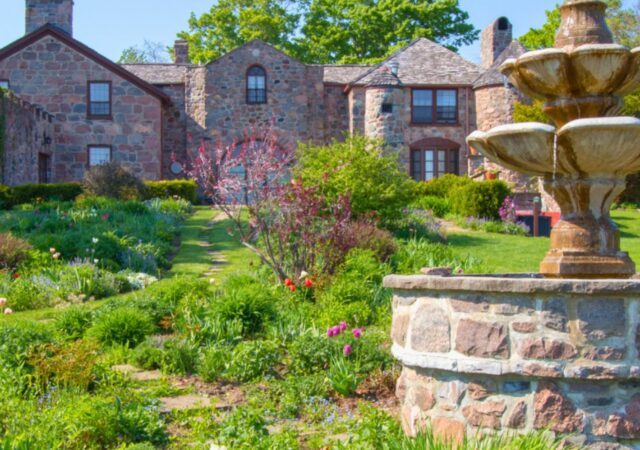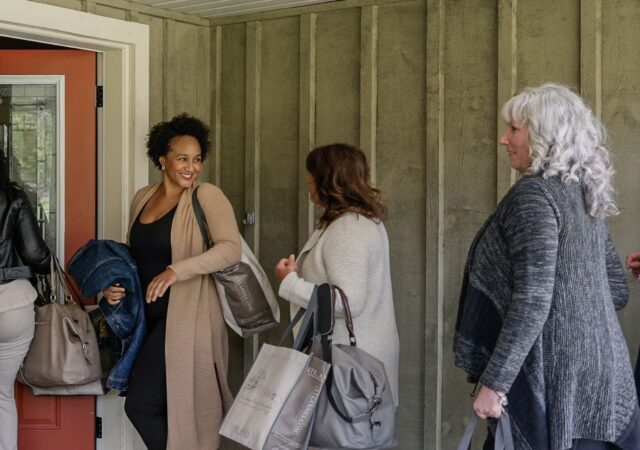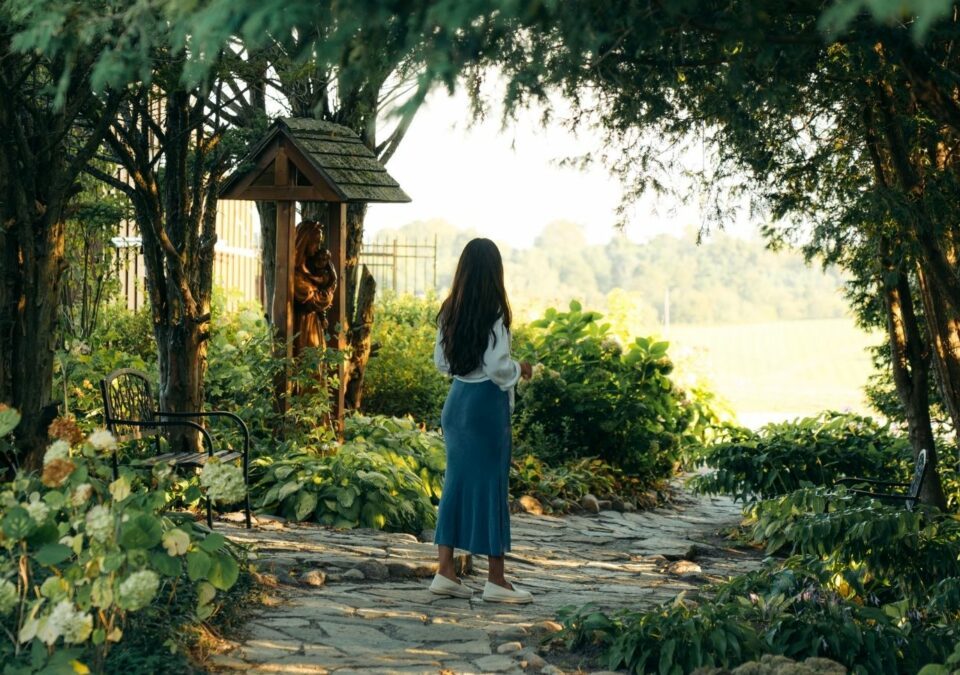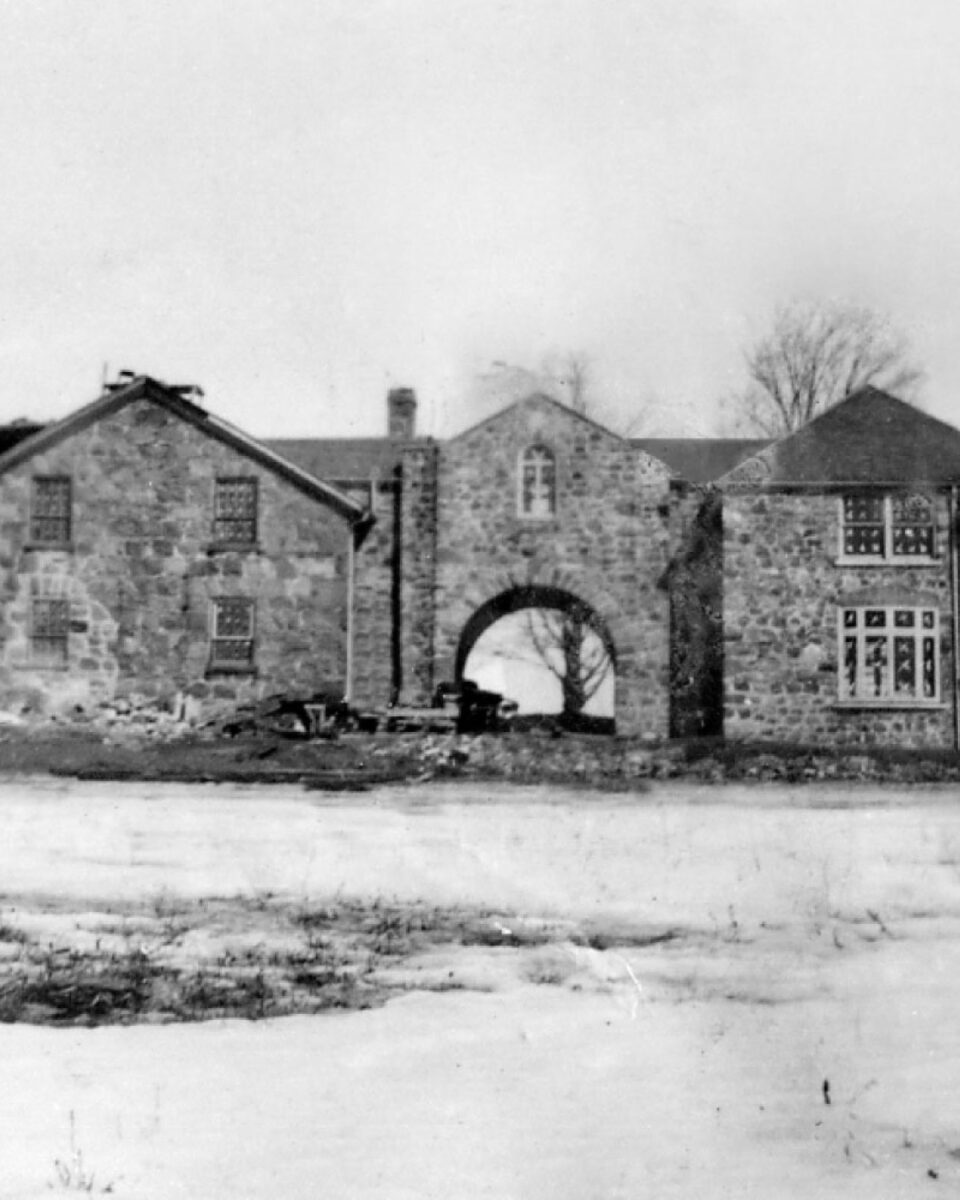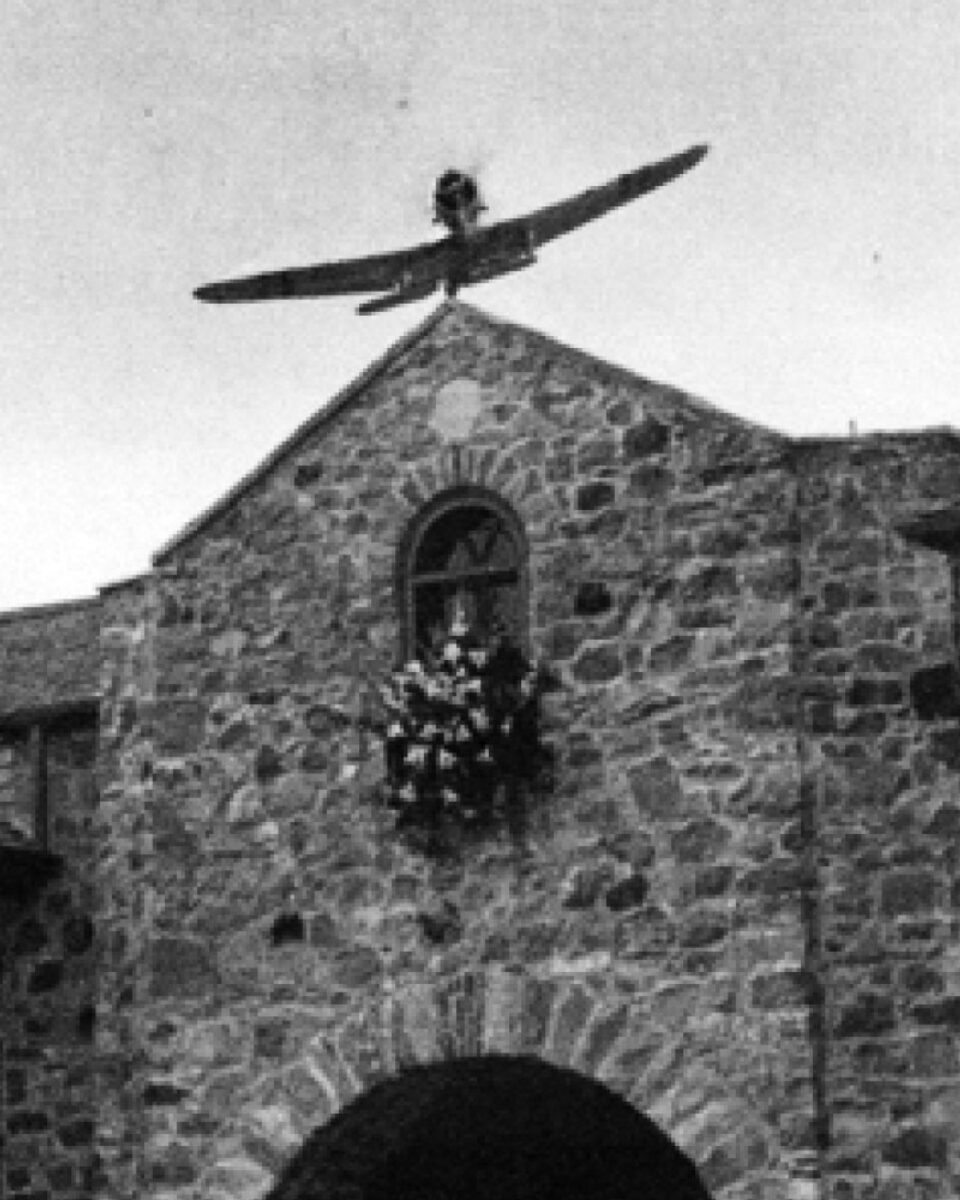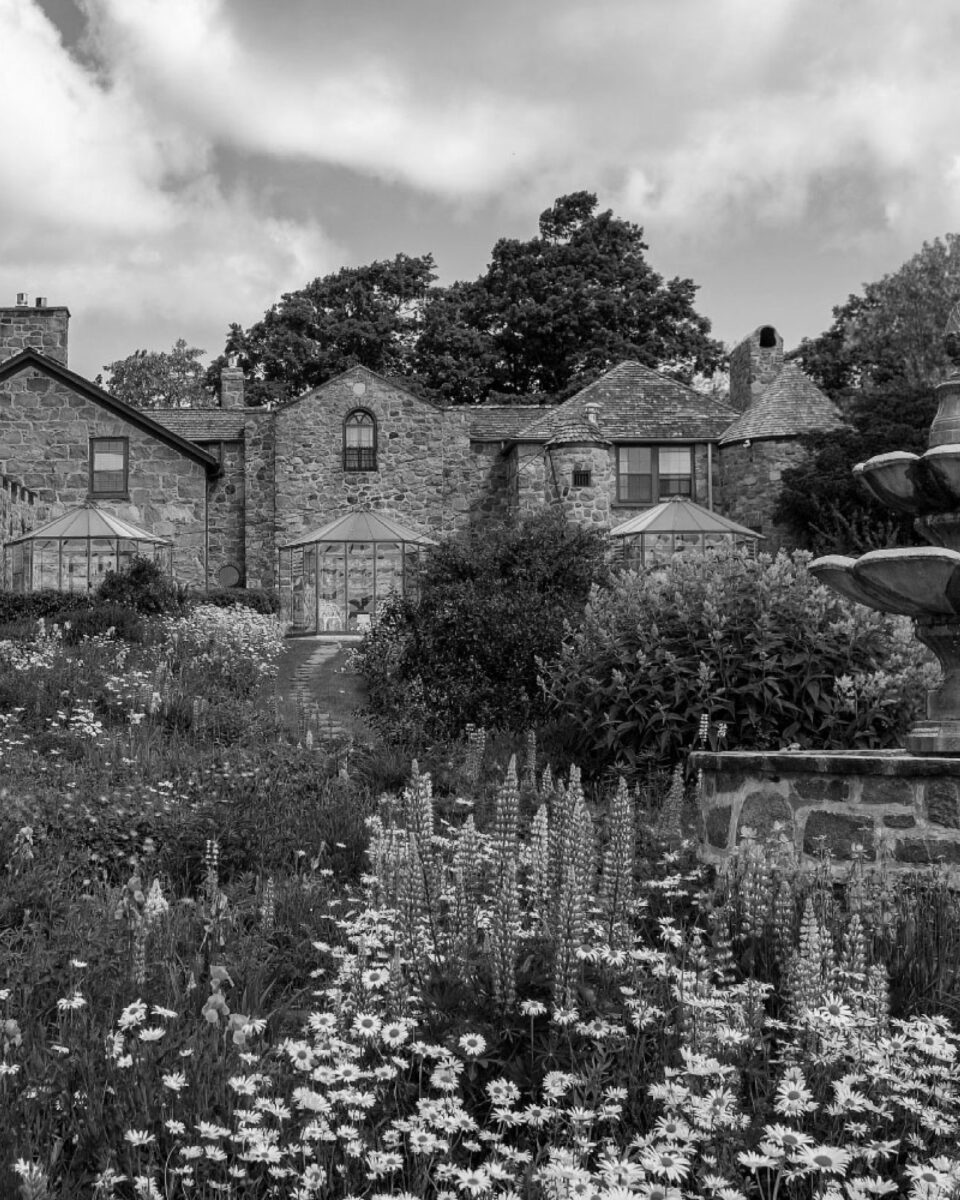The Massey Family
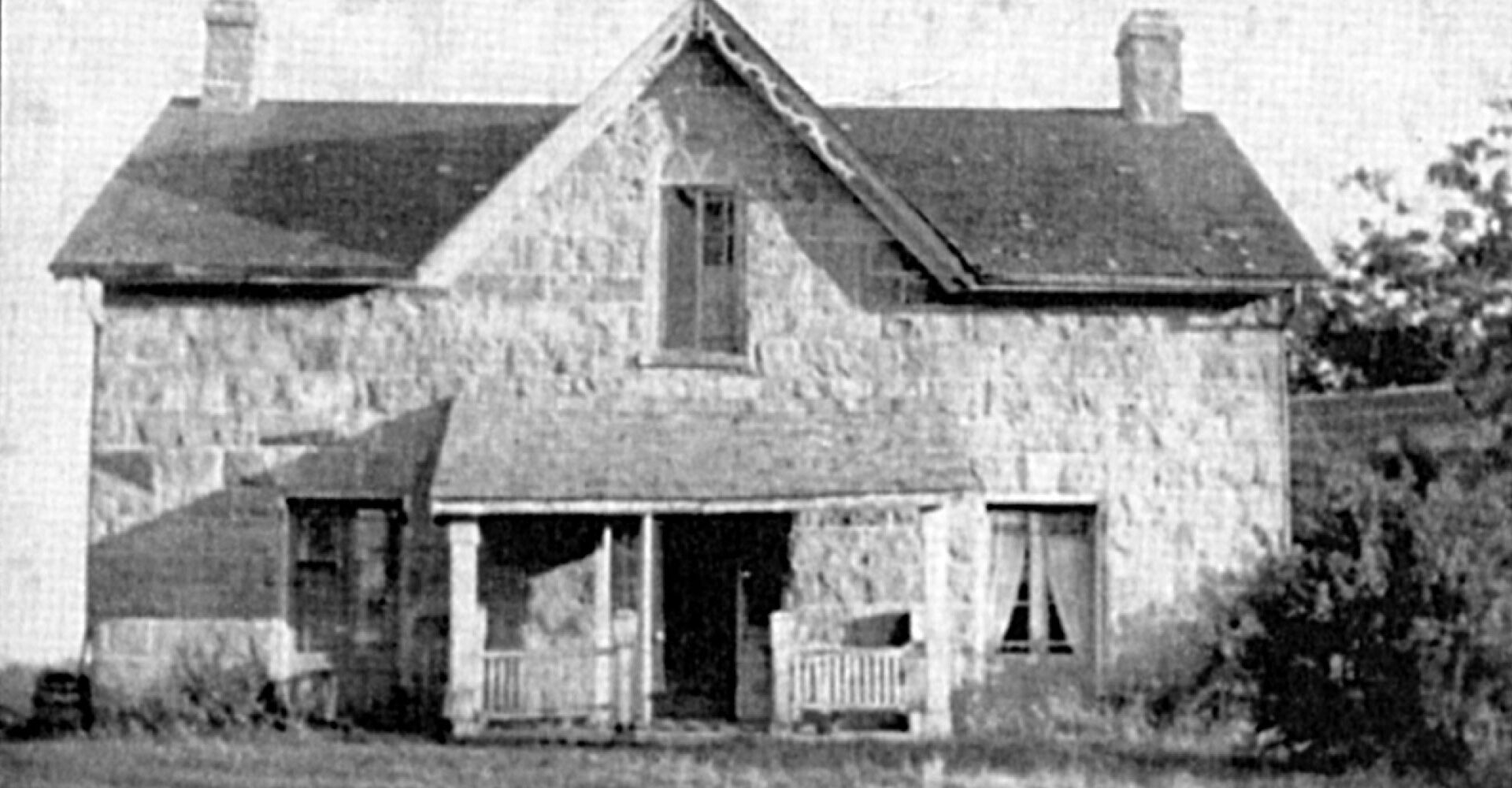
Daniel Massey, born in 1766, was of the sixth generation of Masseys in America. Descendants of the first settlers, Jeffrey and Ellen, had moved out into many of the states. Daniel had lived in New Hampshire, Vermont, and New York State before coming to Canada. Some historians speculate Daniel’s move to Canada may have been motivated by support for the Loyalist cause. It is more likely that he came to Canada, as did so many Americans at the time, for the opportunity to purchase cheap land. (By 1812, when the border was closed to Americans, the population of Upper Canada had grown to 100,000. Eighty percent were American, yet only 20,000 were Loyalists or their descendants).
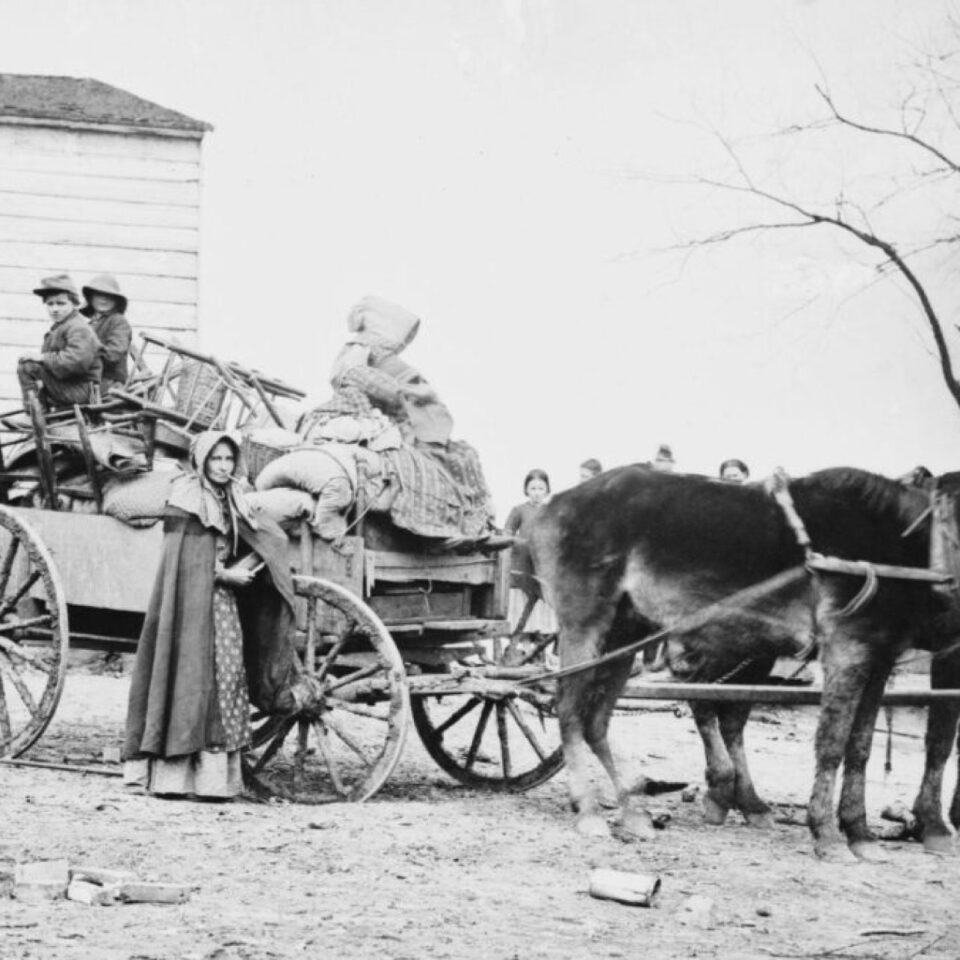
More importantly, land was still readily available, and Daniel and Rebecca may have been planning ahead for their son’s future. Daniel and Rebecca left Sackett’s Harbour, New York with their daughter and three sons in 1802. They crossed Lake Ontario by schooner and most likely landed at a harbour near Grafton, which was then a small settlement called Grover’s Tavern. They were among the first settlers in the area. By 1803, the population of Haldimand Township was only 312.
Where Daniel and his family spent the first few years is not certain. They may have rented or been making farm share payments on the 110 acres they later purchased—the south portion of Lot 23 in the third concession (across the road from the present-day location of Ste. Anne’s).
Surveys of the district were not completed until a few years later, and although some of the southern concession lots were ready and granted, the lot Daniel eventually purchased was not officially registered as a Crown grant to its first owner, Daniel Honeywell, until 1809.
Nevertheless, an 1808 census listed the Massey family in that area. Daniel, age forty-two, held property valued at 82 pounds, with 30 acres under cultivation. He owned three horses, four oxen, and two milk cows. The family, which by then included three sons and three daughters, lived in a house of round logs.
Daniel Massey’s purchase from Daniel Honeywell was not registered until 1812. The north portion of the lot was registered to Moses Hinman Jr. at the same time. It was common practice then for land sales to be conducted on slips of paper which were not formally registered for years. Daniel may have been prompted to formalize his title when he did because of the War of 1812.
Daniel, forty-six, and his two eldest sons, Samuel, twenty-two and Jonathan, twenty, had been called to serve in the war. Not only was there a possibility that he and two of his heirs could be killed, it was prudent to have clear title in case of an American victory. The Americans wanted to gain control of the fur trade and annex the remainder of British-held territories.
Throughout the war, there was ongoing fear in Upper Canada about where the American raids would strike. Rebecca Massey and her children left at home in the backwoods of Haldimand, no doubt heard frightening stories about the American invasion of York from wounded British soldiers who were making their way back to Kingston.
In May 1813, just after the invasion of York, Daniel and Rebecca’s eldest son, Samuel, died at age twenty-three. He was buried near the family homestead, in what came to be known as the Academy Hill Cemetery. The cause of his death is not recorded, but he was possibly one of the victims of the war. When his father and two older brothers were called to defend their new homeland, Daniel Jr., just fourteen years old, was left in charge of the farm and family. Records show that he managed very well. The family’s horses had been taken for the army, so he broke in two young steers to take their place. He hired farmhands to help with the harvest, took grain to market and settled accounts.

It must have been a difficult decision, and it was surely opposed by his father. Daniel Jr. struck out on his own in 1817. For the first few years he employed teams of men who were hired out to clear land for other farmers. When he eventually settled down to farming, he owned over a thousand acres and built a fine home a few miles west of his family’s homestead in an area known as the Gully. He began to import farm machinery, went on to building machinery in Newcastle and, with his son, Hart Massey, founded the Massey Manufacturing Company. However, leaving home at nineteen was not considered proper. At that time, sons were required to work on their father’s farm until they were twenty-one years old. A young man who did not fulfill that obligation forfeited his right to inherit family property.
Daniel Sr. took decisive action to ensure that his namesake would forfeit his inheritance. In 1818, he sold the family homestead to his eldest surviving son, Jonathan, for 150 pounds. Daniel, Rebecca and at least one of their daughters apparently continued to live on the homestead.
Jonathan had married Rachel Merrill in 1814 and a year later he purchased, from Moses Hinman Jr., the north portion of Lot 23 adjoining his parents’ original homestead. It seems probable that Jonathan built a log house on that part of the property to accommodate his growing family.
Between 1820 and 1830, Jonathan bought an additional 500 acres of nearby lots. One of his purchases was the lot across the road from the Massey homestead, Lot 23, Concession 2, the present-day location of Ste. Anne’s. The land had belonged to David McGregor Rogers, a man closely identified with the early history of Upper Canada.
Mr. Rogers had been, at various times, a merchant in Grafton, the Registrar of Deeds for Northumberland County, a clerk of the Peace, a clerk of the District Court and a member of Parliament. In payment for these services, Mr. Rogers received many grants of land. Since he owned several more desirable lots nearer the “front” of the township, he probably never made use of this lot in the second concession which was granted to him in 1804. He did, however, use the title to the lot to secure a loan with Richard Cartwright for more than 300 pounds.
When Mr. Rogers died in about 1823, the loan was not fully paid. Mr. Cartwright was also deceased. His executors arranged for the lot to be sold. In 1824, the local sheriff, John Spencer, put the lot up for auction in order to settle the outstanding debt. Jonathan Massey purchased the lot, “being the best bidder for the sum of one hundred and one pounds of good and lawful money.”
Jonathan may have worked at clearing some of the additional lots he owned, or he may have intended to keep them for his sons. He did, however, sell off 75 acres in the south portion of Lot 23, Concession 2, to Amos Moore in 1828. On September 12, 1831, Jonathan and Rachel’s son, Isaiah, died at age six. The cause of his death is not recorded, but it seems that the loss was so devastating for the grieving parents they could not bear to live there anymore. Less than three weeks after his son’s death, Jonathan sold his family’s original homestead for 100 pounds (50 pounds less than he purchased it for) to his brother-in-law, Ira Richardson, who was married to his youngest sister, Sally. Daniel and Rebecca apparently stayed on, sharing the farm with their daughter and her husband.
Jonathan and Rachel abandoned all their land near the original homestead. They moved a few miles west to 100 acres in the west half of Lot 32, Concession 4, and began building a log house there. He also continued to add to his land holdings, purchasing an additional 230 acres near his new farm. The following spring, April 1832, Daniel Massey Sr. died at age sixty-six. He was buried in the nearby Academy Hill Cemetery. His wife Rebecca died six years later and was buried beside him. The area had changed tremendously during Daniel and Rebecca’s time in Upper Canada. The population of Haldimand Township was approaching 2,000. There was a road, still rough in spots, from York to Kingston. The three-day stagecoach trip cost about 9 pounds, and Spalding’s Inn at Grafton was a coach stop. (The name Grafton was chosen for the town in 1832.) Nearby Cobourg, little more than a cedar swamp thirty-five years before, now had a population of 1,000 with doctors, mills, an apothecary, a post office and even a weekly newspaper.
However, just a little north of the front, there were many uncleared lots and settlers could still be very isolated on their farms. The only local roads were those built by the settlers. Little more than wide trails through the forest with logs laid over swampy areas, these roads were often impassable in spring and fall.

These were social occasions when everyone enjoyed the chance to visit and exchange news. On a hot Saturday in August 1834, neighbours gathered at Jonathan Massey’s new farm, (Lot 32, Concession 4) for a barnraising. Daniel Jr. and his wife, Lucinda, had driven over with their children. Other children from the district were laughing and playing about while their mothers helped prepare food. The men and older boys worked on the building.
In the midst of this happy scene, one of the workers (it is said he had taken too much of the free liquor) dropped a handspike, which struck Jonathan. All the excitement of the day was shattered. The men carried Jonathan, fatally wounded, into the house. He died the following day. Once again, the Masseys gathered at the Academy Hill Cemetery. Jonathan was just forty-two when he died. His widow Rachel was only thirty-nine. Their children ranged in age from nineteen years to twenty months. His will provided 200 dollars for each of his three daughters, to be paid when they married or came of age. To each of his five sons he left horses, sheep and cows, and at least 100 acres to be given as each came of age.
To his eldest son, Samuel, Jonathan left the remaining 125 acres of the lot he had bought at auction years before— Lot 23 in the second concession—the present-day location of Ste. Anne’s. Some of the other bequests of land, however, are puzzling. Two of his sons were left land that did not belong to Jonathan, land which actually belonged to witnesses to the will. Furthermore, some lots Jonathan did own are not mentioned in the will. How did that happen?
The men who were gathered to witness his deathbed must have felt, very keenly, Jonathan’s anguish and dread for his young family’s future. He would not be there to provide for them as they grew and he would not be there to help his sons establish themselves on farms of their own.
Jonathan was in pain, probably in shock, and understandably confused. Perhaps he was drifting in and out of consciousness and not able to make his wishes known. The men who were present may not have realized exactly what properties he owned, but wishing to do for him whatever they could, they made agreements that day. They offered some of their own land to his sons when they came of age.
All the details of the tragedy and the dramatic scene that followed can never be known for sure. Certainly, solemn agreements were made around Jonathan’s deathbed. And they were kept, though some property transfers were not completed until years later.
During the following twenty-four years, Samuel Massey worked to settle his father’s estate. He secured deeds and registered titles, bought and sold properties, and transferred land to his brothers to conform to the terms of their father’s will.
Jonathan’s widow, Rachel, never did remarry. She raised her family and led a busy, productive life in the home she and Jonathan had built just before he died. Rachel Massey died in 1878 as a result of a fall at age eighty-two.
When his father died, seventeen-year old Samuel assumed the responsibility of running the family farm and providing for his mother and siblings. As well as settling his father’s estate, no doubt he also provided his brothers with the livestock specified in the will and ensured that each sister received her cash inheritance.
Samuel’s uncle, Ira Richardson, sold the original Massey homestead to his brother, Julius, in 1836. That same year, Samuel arranged to buy the south 25 acres of that lot, which was across the road from the land he would inherit two years later, at age twenty-one.
Samuel married Mary Masters in 1839 and they probably then moved to the 25-acre farm where they built a log house near the road. The remains of a log house foundation, with a well nearby, were evident until about thirty years ago in the south portion of the lot. Nancy Houston, who owned the property at that time, discovered the foundation. Old-timers in the area told her the log house had been built by a member of the Massey family. An 1841 census indicates there were two houses on the south portion of the lot. Nancy Houston also recalls that another well and evidence of an old foundation had once been found about 300 or 400 yards from the road, near the east side of the lot. Possibly that foundation was the remains of Daniel and Rebecca’s home.
The 1841 census lists Samuel Massey as the head of two households. His own property is described as having two houses, one occupied by Samuel, his wife, and their first child, and the other house is shown as vacant. Samuel is also listed in that census as head of his mother’s household, where crops such as potatoes, wheat, barley, and oats were grown. The farm produced maple syrup, had hives of bees, and, of course, livestock.
An 1851 census shows Samuel and Mary, with four children, still residing on the third concession. William Brown, a sixty-year-old labourer, and a servant, Ellen Devinney, age fifteen, lived on the same lot.
A stone schoolhouse had been built a few years before near the cemetery on Lot 22, Concession 2, and it was at this time the name Academy Hill was given to the school and cemetery. The population of the province was then 952,000.
This was a period of growth and prosperity in Canada. A railway was built from Cobourg to Peterborough between 1852 and 1854. In 1856, the Grand Trunk Railway made speedy travel to Toronto or Montreal possible, and a ticket from Grafton to Toronto was $2.55. The first library for the county was created in Grafton in 1855, and fire protection was arranged for the village of Grafton in 1859. The confusion caused by the common use of two different currencies (dollars and pounds) was resolved when the Canadian dollar came into official use in 1858.
While Samuel was operating his own farm and overseeing the welfare of his mother, brothers and sisters, he was also (in his spare time) clearing the 125-acre lot across the road.
The last purchase of property pertaining to his father’s will was completed by 1858. Samuel could then devote his energy and attention to his own family’s needs.
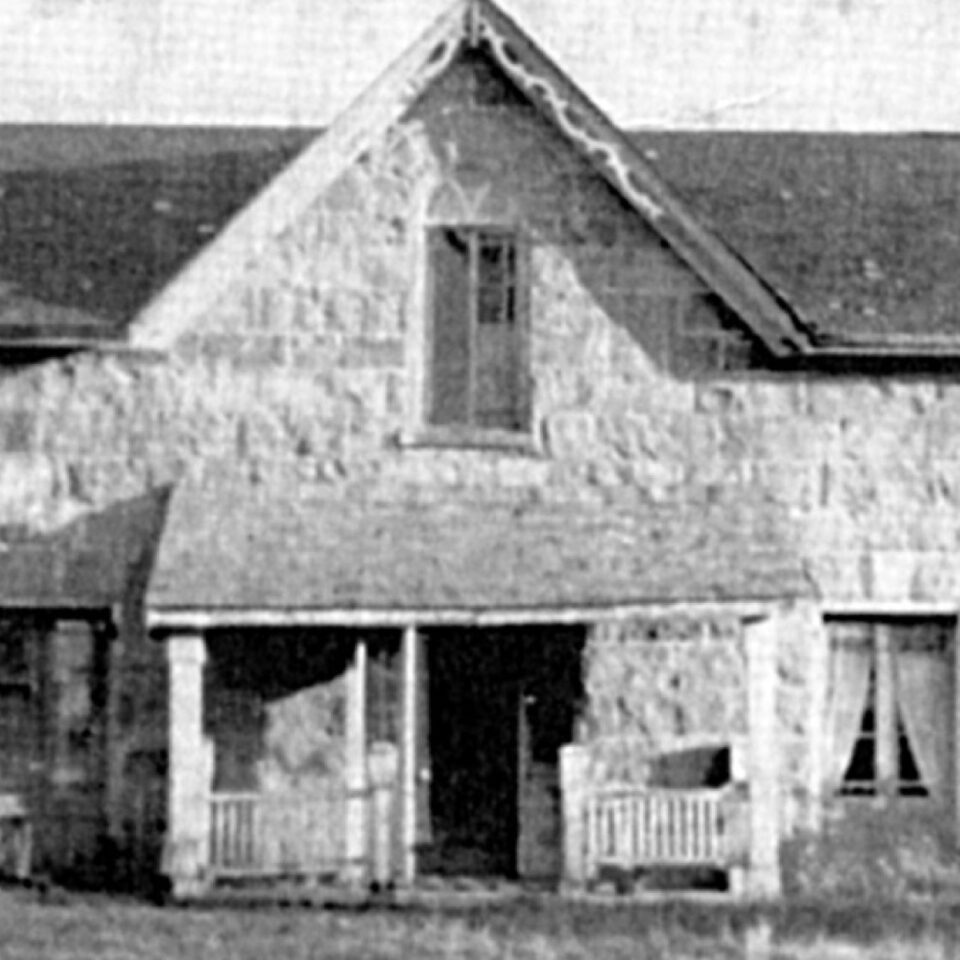
The home which Samuel and Mary named “Sunnyside” was built in the Georgian style of balanced proportions. This style was so predominant in the province throughout the nineteenth century it became known as the Ontario House, also called the Loyalist Vernacular. However, the Massey house did adhere to one important principle of the Regency style then in vogue: the dramatic site for the house was well and carefully chosen. At the south edge of a plateau, it commanded a breathtaking view.
The walls of the Massey house, 2 feet thick and made from locally quarried rose quartz and pink limestone support the roof, a technique usually attributed to Scottish stonemasons. The gabled roof provided more headroom on the upper floor than was allowed in the roof style of earlier houses. Chimneys at either end balanced the exterior, as did the placement of the double-hung windows. The original front doorway, located in the middle of the longer side, was surrounded by a square transom, providing extra light for the main hallway. French doors (which may originally have been tall windows) on either side of the front door continued the symmetrical appearance. The doors and windows were all fitted with shutters.
The wide centre hallway was flanked by the dining room and kitchen on the east side and a large parlour on the west. The dining room and parlour had fireplaces, but wood stoves had become affordable and popular by this time. The bedrooms on the upper level were heated by wood stoves connected to separate flues in the wide chimneys. The pine floors were coated with milk paint in umbers and ochres, or warm greys, except for the kitchen floor which was commonly left bare so it could be regularly scrubbed with a mixture of sand and herbs. Floors in formal rooms had carpets—possibly Persian but more likely Axminster—while bedrooms had painted canvas floorcloths. The split-lathe and horsehair plaster walls might have been painted and stencilled, or wallpaper could have been ordered for formal rooms.
Samuel sold the 25-acre lot on the north side of the road to James Hossack in 1869 for 1,250 dollars. That may have been the year the stone addition to the south side of his house was made. The construction of the addition is strikingly similar to the original. The stones are almost as large, and the mortar appears to be the same composition.
It is doubtful that the addition was built much later than 1869, and changes to the original building may have been made about the same time. The stones surrounding the window above the front door show signs of being reworked. The central gable window may also have been added at the same time, to provide extra light in the upper hallway. The lower floor of the addition housed the main kitchen, and servants’ quarters were probably upstairs. A wooden addition extended to the west of the rear portion to serve as a summer kitchen and woodshed. The Masseys’ well was inside that addition. The well was dug 80 feet deep with stone-lined walls. Even so, in dry summers it was not reliable.
That same year, Samuel helped his second son, Edward, buy property adjoining his farm: 50 acres on Lot 24 and 25 acres on the south portion of Lot 23, from Amos Moore. Edward built a house close to the middle of Lot 24. Then, in 1873, Samuel divided his own farm in half, selling the west portion to Edward. Samuel did, however, reserve six acres in the west half, which provided him with access to the wetlands and streams in that area. When his well was low in dry summers, water was drawn from those streams. Ironically, the existence of an aquifer under his land was probably not even suspected at that time, and an adequate water supply was a constant concern for area farms with wells on higher ground.
By 1880, the deforestation of southern Ontario was causing changes. In spring months, there were record-level floodings and the rapid run-off meant less water was percolating into the soil. Droughts resulted. Springs and rivers carried less water in summer. The great rivers—the Moira, the Gananoque, and the Salmon—that used to rush out of the watershed to the north of Lake Ontario, powering mills and carrying log booms lost their might. Around this time, the numerous mills along Shelter Valley Creek began to disappear. During the 1880s and 1890s, an agricultural depression occurred and many farmers lost their livelihood.
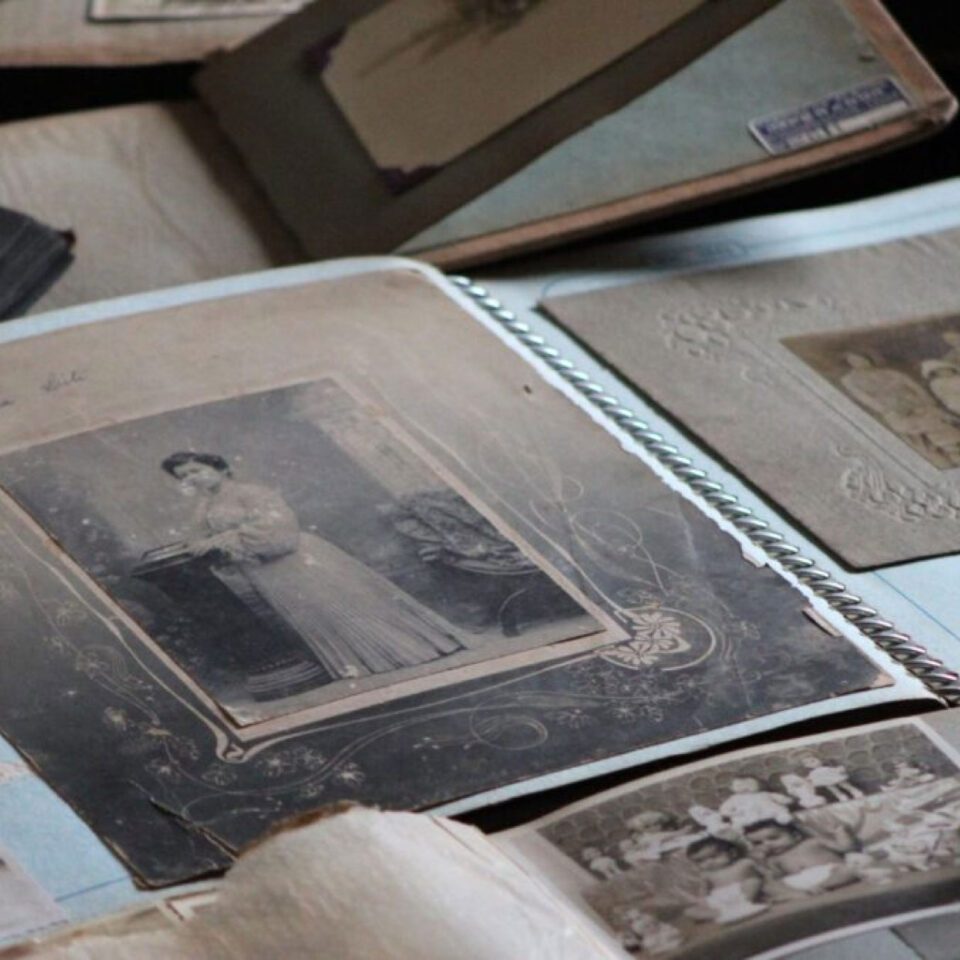
Edward and his family may have stayed in their home as tenants for a time or may have moved in with Samuel. In either case, Edward was likely helping to manage his father’s farm until he moved to Rochester in 1904.
Samuel’s wife, Mary Masters Massey, died in July, 1890. Until his death in February 1899, Samuel continued to live at Sunnyside with his daughters, Elizabeth and Lucy, and his grandson, Edward Gram. Samuel, Mary and their daughter, Susan, are buried at the Academy Hill Cemetery.
Samuel’s will left his farm to the two daughters who had been living with him: Elizabeth Massey, spinster, and Lucy Gram, widow.
The grandson, Edward Gram, married Eliza Coulter in 1901. There is evidence to suggest that they lived at Sunnyside after their marriage and that their two children were born there.
Sunnyside was sold in 1907, possibly in order to divide the inheritance because Lucy Gram remarried in 1908. After the sale, Elizabeth may have continued to live there for some time as a tenant. She did not marry until 1917, when she was sixty-three years old.


